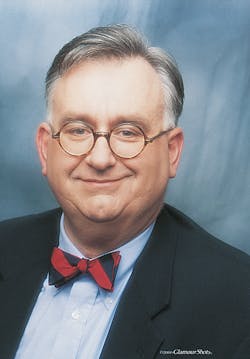INITIAL SIZE-UP
- Weather
- Incident type
- Time of day
- Time of week
- Time of year
- Height factors
- Construction
- Occupancy
- Access to structure (or scene)
- Life hazards (if known)
Whenever think about my first working fire as a fire captain on Engine 15 in the Newark, NJ, Fire Department, it seems as though it happened just yesterday. My company and I encountered a heavy fire condition in a row of two- and three-story frame dwellings on Fourth Street near Orange Street. In my mind, I felt that my actions were a seamless evolution of all of the proper things a first-due captain should do. From the size-up, through the messages to my battalion chief, to the performance of my crew, it was (at least to me) just great.
Unfortunately, one of my most sincere and honest critics was at this fire – my brother Bob (later a deputy chief and commander of Newark’s 4th Tour). After the fire, I was sitting on the front bumper of our old R-Model Mack pumper when he came up to me, grabbed me by my throat and dragged me to my feet. He told me what a screaming meemie I had been and how disappointed he and the boys on Engine 11 and Truck 11 were with my first performance as an engine company commander. Talk about splashing cold water on my spirits.
The important lesson was the manner in which I took this criticism. I vowed that I would never again act that way. He and my buddies were right. He said they could not understand my messages because I was shouting into our rig radio’s microphone. It took a lot of effort for me to overcome the tendency to become excited.
As the person riding the right-front seat, you must concentrate on being calm, cool and collected when you brain wants to bring out the screaming little child in your spirit. This can very difficult as you enter a housing development and meet with a tongue of fire licking out across a street filled with cars, bicycles and screaming people calling for your help. But you must do this if you are to set the stage for a proper operation.
The key to success at times like this is to stay with the procedures you learned and then taught to your crew. Assess your situation and then deliver a proper size-up. Indicate the location of the situation and establish command according to your departmental operating guidelines.
As the person riding the right-front seat on the first unit, you must concern yourself more with tactics than strategy. You have one unit at your disposal and you must decide how best to use it. Ask yourself “What have I got?” and begin to deploy your forces in response to what is happening in front of you at that moment. The answers to the “What have I got?” question serve as the basis for your emergency response size-up. This column introduces some answers to this critical element of your initial size-up.
Weather
Weather is a given. You cannot avoid it. There are problems with heat, cold, rain and drought. Each has an impact on the manner in which you manage an incident. You begin to study the weather by looking out of the windows of your home, and then keep an eye on it during your trip to the fire station.
However, unless you are experiencing a real run of severe weather, this particular size-up factor is a quick study. Once you have noted that rain is falling and the wind is blowing, you can move on to the next important area. But extreme or violent weather does occur from time to time and it will affect all that you do during an emergency response.
Weather can slow down what you do. During the snowy months of winter, it takes extra time to arrive at a fire and to mount and pursue your attack. Operations must proceed more slowly and cautiously when ice is present. Cold weather also puts a strain on your personnel and requires you to consider finding a warm place for them to thaw out.
Are hurricanes a problem in your area? They can place severe demands on your operation. Normal routes of response may be unavailable. It will take a lot more time to stage and deploy your resources on the fireground during a major storm. Resources normally included in your mutual aid network may be tied up with operations in their own communities. If you respond in severe heat, firefighters will have to be rotated out sooner and rehabbed to guard against heat exhaustion or heat stroke.
Incident Type
What type of incident are you dealing with? Other questions can then come quickly to mind:
- Is there a life hazard? (This is always our first priority)
- Is it a vehicle fire?
- Is it an extrication call?
- Is it a structure fire?
- Is it a woodland or wildfire incident?
- Is there something dangerous in the structure?
- Is something really screwy involved?
- Is it a petroleum storage depot?
- Hazardous materials?
- Chemical facility?
- Piers and ships?
Identify the answer to each of these questions as quickly as possible. They have a strong impact on the steps you can take with the limited resources under your command. Each type of incident will present a distinct set of tasks to be accomplished. Think and act as the situation dictates, taking pains to protect the people entrusted to your care.
Time of Day
What may not be a problem at 2 P.M. can turn into a serious matter at 2 A.M. At this point, I want to caution against the standard obvious comparison of a home in the afternoon, with no one at home, and the same home in the middle of the night. This presumes certain stereotypical patterns that may no longer be valid. It is up to you to determine the demographic patterns in your community. Does a young family with small children live in the same way as a senior citizen couple residing in an adult community? We think not, and so should you. There are as many variations on this thought as there are neighborhoods in your community. Be aware of how your community lives its life so that you can make intelligent decisions on the fireground.
Learn about your community. Let me ask a few questions about whether any of these situations is a problem in your town:
- Is there a rush hour?
- What parts of your town are affected by heavy traffic?
- Are there industrial plants? If so, are they on shift schedules? What impact does this have on your response?
- What buildings in your community have a variable occupancy based on time of day?
Time of Week
There is a great deal of variability when it comes to time of week as a practical consideration. Here are a few questions to stimulate your thinking:
- Is your middle school going to present the same problems to you on a Sunday as on Thursday afternoon?
- Are you faced with heavy commuting traffic on a daily basis?
- Is there a busy time and a quiet time for your shopping district?
- Will your church present the same problem to you on Wednesday as on Sunday morning?
In addition to these basic questions, identify anything specific to your community. You cannot learn this information from the comfort of your fire station. You must get out and visit.
Time of Year
Time-of-year scenarios can vary widely. A fire officer riding the right front seat in an engine company in Arizona surely faces different problems in January than I do in New Jersey. Learn your weather patterns and then gear your operation to the unique problems found in each season. Here are some questions to guide your thinking:
- Do you have a flood season?
- Are there dry desert winds at any time of year?
- Can you move your equipment through the snow-congested streets of your community?
- Can your mutual aid assistance make the run to your town in January with the same speed as in June?
- Are you prepared to fight a fire during a Force 3 hurricane?
- Is your community more heavily populated during certain seasons?
- Is your fire department membership roster steady on an annual basis? Or are there periods when more people leave town on vacation?
This list is by no means complete, but should serve as a starting point to get you thinking. You could face many what-if situations. If you have not spent a lot of time thinking about different variables and how to deal with them, you will be in for a rough time when fire strikes. Time is a variable in everything you will ever do or face. Recognize it and be ready.
Height Factors
It has been my experience that fire suppression problems increase with the height of the building involved. Some of the things to consider on your arrival are:
- Can you reach the roof of buildings in your district with ground ladders?
- Are all of the windows where rescue may be necessary accessible to your ground-ladder complement?
- Are there areas in your community where you cannot operate aerial devices because of overhead wires and/or narrow streets?
- Is your department trained and equipped to properly attack a fire in a high-rise occupancy?
- Can your aerial devices reach all areas of an occupancy with expansive, modern landscaping?
- If you need aerial service and do not own such apparatus, where are they located and how quickly can they respond? (Automatic mutual aid can save precious minutes during an emergency.)
- Are your personnel trained to operate aerial and ground ladders? Address this issue ahead of time through periodic drills and assessments.
Next: More on the critical “What have I got?” phase
HARRY R. CARTER, Ph.D., a Firehouse® contributing editor, is a municipal fire protection consultant based in Adelphia, NJ, and a veteran of 47 years in the fire and emergency services. He is chairman of the Board of Commissioners in Howell Township Fire District 2 and retired from the Newark, NJ, Fire Department in 1999 as a battalion commander. Dr. Carter has also been a member of the Adelphia Fire Company since 1971, serving as chief in 1991. He is a life member and past president of the International Society of Fire Service Instructors and a life member of the National Fire Protection Association. Dr. Carter holds six degrees, with his terminal degree being a Ph.D. in organization and management, with a specialization in leadership, from Capella University in Minneapolis, MN, where he is an adjunct faculty member.
?

Dr. Harry Carter
HARRY R. CARTER, Ph.D., who is a Firehouse contributing editor, is a fire protection consultant based in Adelphia, NJ. He is chairman of the Board of Commissioners in Howell Township Fire District 2 and retired from the Newark, NJ, Fire Department as a battalion commander. Carter has been a member of the Adelphia Fire Company since 1971, serving as chief in 1991. He is a life member and past president of the International Society of Fire Service Instructors and life member of the NFPA. He is the immediate past president of the U.S. branch of the Institution of Fire Engineers (IFE) of Great Britain. Carter holds a Ph.D. in organization and management from Capella University in Minneapolis, MN.
Connect with Harry:
Email: [email protected]






